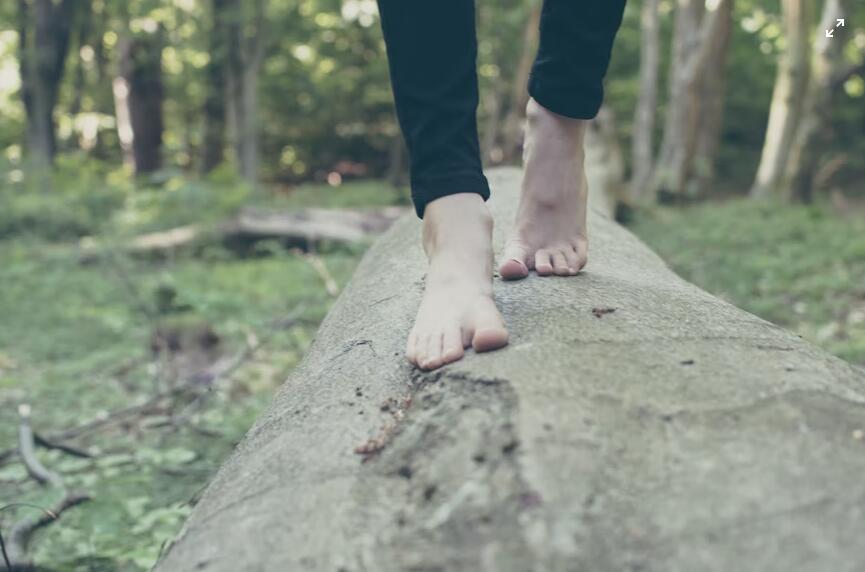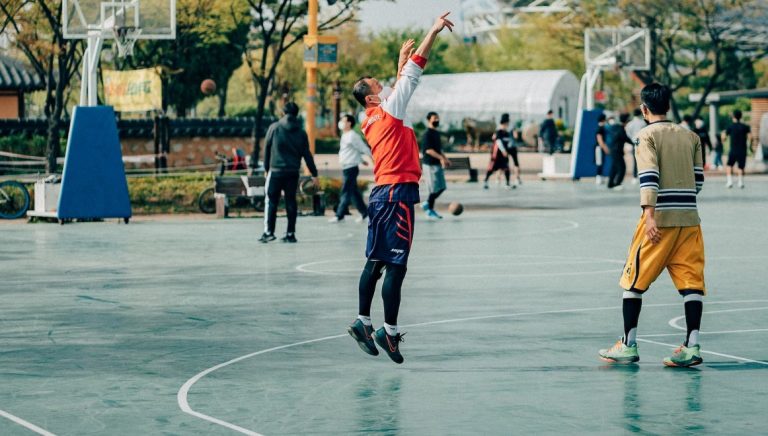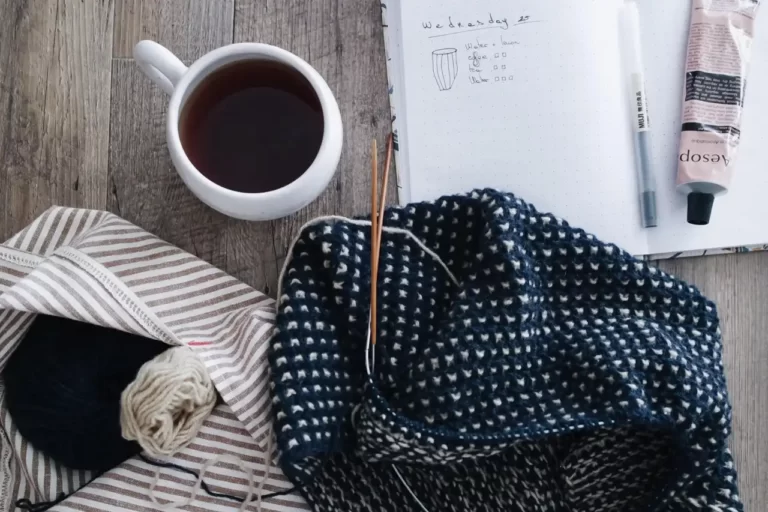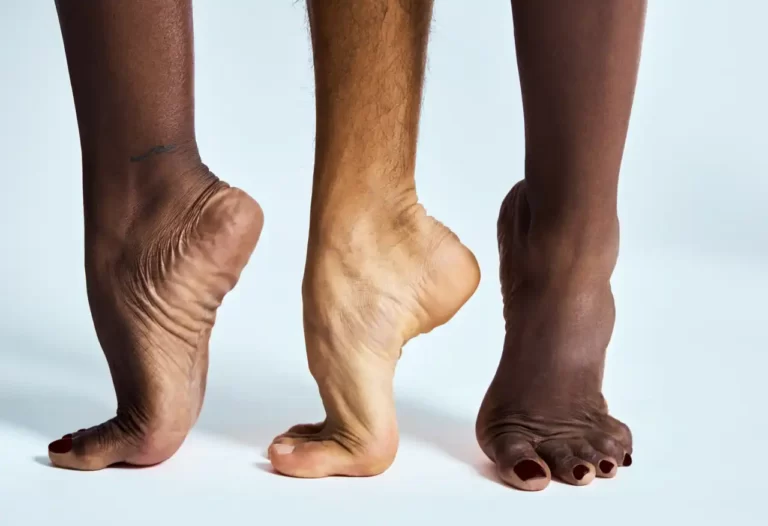How Foot Sleeves Relief Your Plantar Fasciitis Pain
Plantar Fasciitis is an inflammation of the plantar fascia, a thick band of tissue that runs along the bottom of your foot. This condition can cause pain in the heel and arch of your foot.
Plantar fasciitis is one of the most common causes of heel pain. It’s caused by repeated stress on your plantar fascia, a ligament that stretches from your heel bone to your toes. The pain may be worse in the morning when you first get out of bed or after long periods of standing or walking.
The plantar fascia is made up of fibrous tissue that connects your heel bone to your toes. Its main role is to support your arch and help you walk. The plantar fascia expands and contracts with each step you take, which helps absorb shock during walking and running. As it contracts, it tightens like a bowstring and pulls on the heel bone. Over time, this constant pulling can damage the tissue, causing small tears that result in inflammation and pain.
Here are some of the common causes of plantar fasciitis:
You can also get it without doing any sports.
Plantar fasciitis is a common sports injury, but you can also get it without doing any sports. Plantar fasciitis is sometimes called “heel spur syndrome,” but this isn’t the same thing as the heel spurs found in rheumatoid arthritis.
In one study of people who’d been diagnosed with plantar fasciitis, more than half had no history of exercise or high-impact activity before their symptoms began. And in another study, most patients said that they didn’t have any underlying foot problems before developing plantar fasciitis; instead, the injury was caused by activities such as walking, running up stairs and even jumping up (which is why some people refer to it as a “jumper’s heel”).
Suddenly increase the amount of activity you do.
You’re more likely to get plantar fasciitis if you suddenly increase the amount of activity you do.
For example, if you suddenly start running a lot or playing sports regularly, your foot will be under more pressure than it’s used to. This is especially true for people who were not active before.
Pregnancy can make you more likely to get plantar fasciitis.
Pregnancy can make you more likely to get plantar fasciitis. Some women have a type of plantar fasciitis that’s caused by spending time on your feet, which causes the arch in your foot to stretch out. It can happen if you’re overweight or underweight, if you have flat feet, or if you’ve been walking around in high heels for a long time. If you’ve had an injury involving the back of your heel, there’s also a chance that this could lead to plantar fasciitis.
Plantar fasciitis is common in cyclists
Cycling is a common sport that can cause plantar fasciitis. The position of your foot on the pedal puts pressure on the bottom of your foot as it pushes down. Some people develop small tears in their plantar fascia ligament, which can cause pain when they walk or run. Other people have no symptoms at all, but the injury still exists and can lead to other problems later in life if not treated well
Runners are prone to getting plantar fasciitis.
Runners are prone to getting plantar fasciitis because of the way their feet strike the ground when they run. Because running involves repeated impacts, the muscles in your feet and ankles work much harder than they do during normal daily activities. This can cause trouble for runners with weak foot muscles that don’t have enough strength to support the arch of their foot.
If you’re a runner and you’re experiencing pain in your heel or arch after exercise, make sure that you’re stretching before and after every run. Stretching prevents tightness in your calf muscles that can contribute to plantar fasciitis development over time. Stretching also improves circulation in your lower legs, which reduces swelling that contributes to heel pain. It’s important not only when exercising but also at other times throughout the day—stretch while sitting at work or watching TV so that you know how long it takes for an activity like yoga or swimming (both great ways to relieve stress) before starting out on a run again!
A previous sports injury to your feet or ankles
- A previous sports injury to your feet or ankles can make you more prone to getting plantar fasciitis. One study looked at over 80 runners and found that 35% had a previous history of ankle sprain, which is when one or more ligaments in the ankle are stretched or torn.
- You may also be more likely to get plantar fasciitis if you do too much too soon after an injury. Studies have shown that if you try to resume normal activities before your foot has completely healed, it can lead to problems with the plantar fascia. If you’ve had an ankle or foot injury recently, it’s important for you to see a doctor before starting any new exercise routine—they’ll help determine what exercises are safe for your recovery and will recommend exercises that can strengthen the muscles around your foot while helping with pain management
Your job involves a lot of walking or standing on hard surfaces
If your job involves a lot of walking or standing on hard surfaces, it could cause plantar fasciitis.
Some jobs that require a lot of standing include:
- Construction workers
- Nurses and other medical professionals who work in hospitals
- Teachers and professors who stand at their lecterns during class
Too much strain is put on the tendon
Plantar fasciitis is caused when too much strain is put on the tendon that connects your heel bone to your toes and helps make up the arch of your foot. This band of tissue, called plantar fascia, can become inflamed or irritated when you overuse it. The most common activity that can cause this inflammation is running or walking on hard surfaces for long periods of time without adequate breaks.
Wearing poor shoes or flip-flops
You can cause your plantar fascia to become inflamed by wearing shoes that don’t provide good arch support. If you wear shoes that don’t provide arch support, your foot muscles have to work harder to keep your arch in place, which can cause strain on the plantar fascia as it tries to stabilize your feet while you’re standing or walking. A shoe with good arch support will help reduce any unnecessary strain on the plantar fascia and prevent injury.
Being overweight
Being overweight puts more pressure on your feet, making you more likely to get plantar fasciitis. If you have been gaining weight, losing it can help prevent plantar fasciitis.
Being overweight also increases the risk of other foot problems and makes exercise less effective at reducing the pain from plantar fasciitis. This means that if you are overweight, losing weight will help reduce both your risk for developing plantar fasciitis and the amount of pain caused by it.
Standing for a long time every day
Standing for a long time every day is a risk factor for plantar fasciitis. And it’s also a risk factor for other foot problems, such as heel pain and foot pain.
If you stand for many hours each day, your feet are always in an unnatural position that puts unnecessary pressure on the plantar fascia. This can cause inflammation of the plantar fascia and lead to plantar fasciitis.
Having tight Achilles tendons
If you have tight Achilles tendons, the band of tissue that connects your calf muscle to your heel bone, it may cause pain in the area where the plantar fascia attaches to the heel bone. If this happens, you may develop heel spurs or other bony growths on the underside of your foot.
Having high arches or flat feet.
Flat feet,high arches.
These are the two most common causes of plantar fasciitis, and they’re also often present in people who don’t have it. This is because having a high arch or flat foot can alter your walking gait, which makes it more likely that you’ll develop plantar fasciitis as you age—even if you aren’t overdoing things in the gym or on your feet at work. In fact, studies show that around 40 percent of people with flat feet experience pain from their condition by the time they turn 50!
What Are Foot Sleeves
Foot sleeves are used to keep the feet warm during cold weather or while playing sports. They are made of neoprene or nylon and are a great alternative to socks. The material can also be used for other purposes, such as protecting your feet from blisters.
Foot sleeves help prevent blisters by reducing friction between the skin and shoes. They also keep your feet dry and warm in cold weather.
Foot sleeves are suitable for all ages and can be worn by men and women alike. They are available in a range of different colours and designs so you can choose one that matches your personality and style.
How Foot Sleeves Help Plantar Fasciitis Relief
Offer compression, prevent inflammation and swelling.
The benefit of sleeves is that they offer compression, which helps to reduce inflammation and swelling. It also helps to prevent pain by keeping your foot in a straight position and reducing the stress on your heel bone when you walk or run. This is why we recommend wearing them for long periods of time if you are suffering from plantar fasciitis.
Immediate relief and help you recover fast.
Foot sleeves will provide you with immediate relief and help you recover faster. However, they work best when used in conjunction with other treatments like stretching and icing the affected area.
To get the most out of your foot sleeve, wear it whenever you go for a walk or jog. You should also use it when you go to bed at night and during your rest periods between exercise sessions. The more often you put them on, the more effective they will be at relieving your symptoms!
Improve circulation, helping to reduce pain.
The foot sleeve improve circulation, helping to reduce pain. With the foot sleeve on, you will feel a warm sensation in your feet that is similar to what happens when you put on a pair of socks after taking them off. This is because as soon as the air hits your skin and there are no longer any layers between them, it will warm up quickly.
As we mentioned earlier, this improved blood flow can help alleviate some of the swelling and inflammation in your feet. It also means that more oxygen and nutrients are carried through your veins directly into the bones instead of stopping at that first layer of skin where they were previously blocked by calluses or bunions (among other things).
Warmth, preventing the stiffness
Foot sleeves can be used in a variety of weather conditions. They are beneficial when you exercise outside in cooler weather, as they provide warmth and extra comfort to your feet. They also keep you from slipping on wet surfaces, which is especially useful if you’re planning on using them for outdoor running or training. You may have heard that wearing foot sleeves is helpful for preventing plantar fasciitis symptoms, but did you know that it’s also good for keeping your feet warm? If you live in a cold climate where winter sports like skiing or snowboarding are popular, these accessories will keep your toes toasty without compromising performance or comfort—plus they’re great at preventing blisters!
When summer rolls around (or even if there’s already been some springtime precipitation), wearing foot sleeves while performing exercises outdoors helps prevent slips due to wet conditions such as rain puddles or dew-covered grassy areas after rainfall overnight…and this can help reduce stress on your body joints when performing high-impact workouts like running sprints across slick surfaces while avoiding injury caused by falling over while doing so.”
Protect your feet from impact.
Wear foot sleeves not just about cushioning your feet. It’s also about protecting them from impact. As you walk around, your body weight is constantly shifting onto the balls of your feet. Over time, this can cause pain in the bottom of the foot and arch area that can be quite painful and even debilitating if left untreated.
The foot sleeves provide a protective layer between your bare skin and the ground beneath it, which helps to prevent pressure points from forming when shifting weight from one leg to another during physical activity or exercise. This makes them excellent for anyone who tends to run on hard surfaces such as concrete or asphalt because it reduces friction caused by contact with these types of surfaces so that there is less chance for injury along with providing protection against blisters or abrasions due to friction occurring during movement through these areas where they may come into contact with other surfaces while wearing shoes made up entirely out of plastic material such as those found inside their homes (such as carpets)
Foot sleeve offer proper arch support.
If you suffer from plantar fasciitis, foot sleeves can help support your arch and relieve pain. They are made with a comfortable material that will hold your foot in place as it supports the arch and gives relief to the heel area. Most of them have an adjustable velcro strap which allows you to customize how tight or loose they fit around your foot and ankle.
They also help you maintain proper posture.
Foot sleeves can also help people maintain proper posture. People who suffer from plantar fasciitis sometimes develop poor posture. This is because their feet are in pain, so they try to avoid walking on them as much as possible, which may result in a hunched back or other postural problems. Foot sleeves can assist you with maintaining good posture and help you walk properly, reducing the risk of developing additional problems.
Foot Sleeves help control inflammation
Foot sleeves help control inflammation and prevent it from returning. And if you’re lucky enough to have developed a chronic case of plantar fasciitis, then foot sleeves can also help you recover faster by reducing the amount of time spent in pain.
When wearing them every day for extended periods of time (even while at home), these garments will keep your feet warm which helps reduce swelling caused by plantar fasciitis too! And because they’re so comfortable while being tight-fitting enough around your ankles without being too constrictive around other parts like toes & knees etcetera…they’ll make sure everything else stays nice & cozy too!
Increasing blood flow to the affected areas.
Foot sleeves help relieve the pain caused by plantar fasciitis by increasing blood flow to the affected areas. When you are experiencing pain due to inflammation, your body naturally tries to protect the area and prevent further damage. This can cause stiffness or reduce circulation in your feet, which makes it more difficult for your body to heal itself. With a foot sleeve, however, you can increase blood flow without putting pressure on it yourself. This helps reduce inflammation as well as prevent further damage and injury of the plantar fascia ligament while also improving circulation throughout your entire body.
Foot sleeves also help with swelling because they provide support for all parts of your foot including those around the heel area where most people experience pain from excessive weight bearing activity such as walking or running on hard surfaces like concrete sidewalks (which are common outside elements found within city environments). By providing compression around these areas that normally bear most of this pressure when we walk or run around town every day will allow them more room within their shoes which helps keep our feet from swelling up after long periods outside under harsh conditions; especially during summer months when temperatures get hot enough for us being outside all day long!
What Makes A Good Pair Of Foot Sleeves
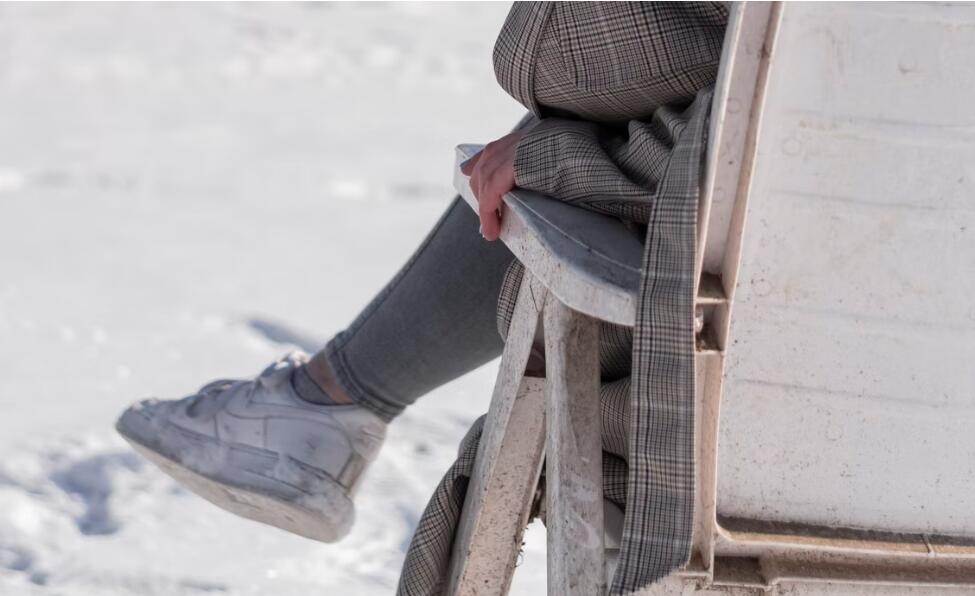
There are many different factors that go into making a good pair of foot sleeves, but here are some of the most important ones:
Materials
Foot sleeves made with high quality materials tend to last longer than those that aren’t made with quality materials. Make sure the material is strong enough so it won’t rip easily and won’t wear out quickly due to repeated use or washing.
Durable Zippers
Foot sleeves should have durable zippers so they stay closed all night long and don’t come undone during use. If you’re going hiking or skiing, you may want to look for ones with double zippers so they’re easier to put on and take off while wearing gloves if necessary).
Compression
Some foot sleeves will have compression around the ankle and calf area to help with circulation, which can be especially helpful if you have problems with swelling in those areas. Others may have no compression at all, so make sure you know what you’re getting before you buy!
Support
If you need extra support for your feet and ankles, this is another thing to look out for when buying a pair of foot sleeves. Some will have extra padding around the heel or arch area to help with comfortability while others will not have any type of support at all.
Fit
Foot sleeves should fit snugly around your feet without being too tight or too loose (a good rule of thumb is that they should fit like a pair of socks). They shouldn’t slip around either; if they do move around too much, then they won’t be effective at providing any support or reducing pressure points.
How To Wear Foot Sleeves For Plantar Fasciitis Relief.
Choose a pair of compression socks that suit your needs (some are shorter than others).
Place your foot inside the sock, so that it’s stretched to its full length. Make sure there’s plenty of room for movement at this point — don’t try to put on a pair of tight socks if you want them to stay on comfortably!
Pull the sock up over your ankle until it reaches just below your knee (or wherever you want them to stop). You may need help with this step if you’re having trouble reaching up there on your own.
When To Wear Foot Sleeves
- Foot sleeves can be worn while you sleep or during exercise.
- You can wear foot sleeves all day or night
- You can wear them to run, walk, play football or any other sport or activity.
Conclusion
We’ve covered the basics of plantar fasciitis and explained how foot sleeves can help relieve the pain caused by this condition. We’ve also discussed why it’s important to choose a good pair of foot sleeves, including which features should be included in your purchase. In summary, you want something that has enough compression to reduce inflammation but not too much so as not to cause more problems like edema (swelling) or blisters; they should also offer good arch support, padding where needed and ideally some warmth (depending on where you live). As always, we recommend trying them out before buying anything so that you know exactly what feels right for your feet!

